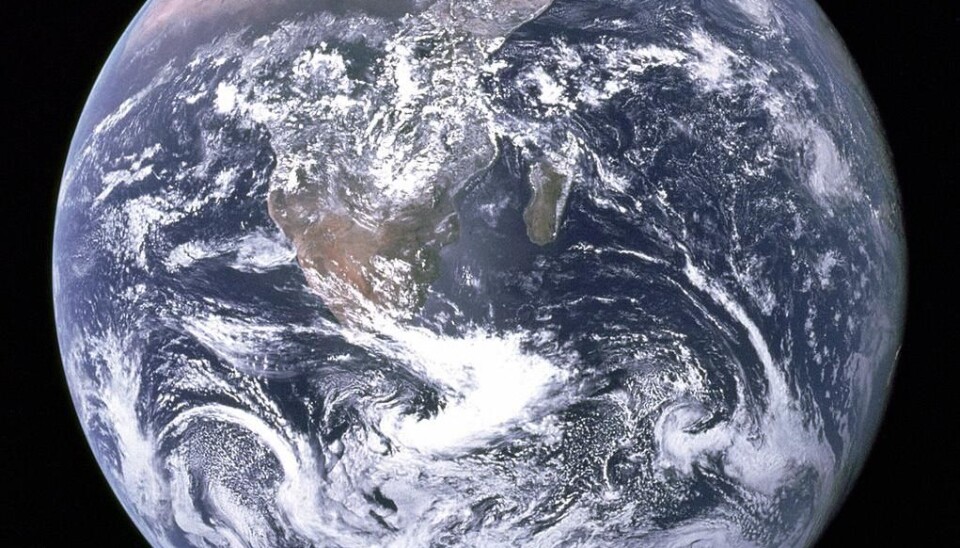
Modern plate tectonics arose 3.2 billion years ago
Plate tectonics – geological developments that have given the Earth its current appearance, with oceans, continents, mountains and deep valleys – started 3.2 billion years ago, new research shows.
Volcanoes, earthquakes, tsunamis, oceans, continents, the climate and even life on Earth – all have been influenced by movements in the Earth’s crust.
In other words, plate tectonics – which determines how the Earth’s geology is structured and where the oceans and continents are located – is the foundation on which everything else on our planet rests.
But the mechanisms behind the constant movements in the Earth’s crust have not always been as they are today.
New research indicates that the dynamics driving the whole plate tectonics system as we know it today didn’t arise until 3.2 billion years ago.
It is interesting to note that life on Earth arose at a time when the whole system that controls everything from continents to atmosphere was very different from the one we have today.
Tomas Næraa
“We have published a very important element in a discussion that is central to our understanding of the Earth’s development,” says Tomas Næraa, a researcher at the Geological Survey of Denmark and Greenland (GEUS) and the Nordic Center for Earth Evolution (NordCEE).
“Our research shows that the basic mechanisms behind the movements in the Earth’s crust changed 3.2 billion years ago. These new results give us a better understanding of how the oceans and the climate are affected by movements in the Earth’s lithosphere – the crust and the topmost solid layer of mantle.”
Together with Swedish and Australian researchers, Næraa was responsible for the new discovery.
The results of this research have just been published in the scientific journal Nature.
How plate tectonics works
The Earth’s appearance today and over the past 3.2 billion years is largely the result of plate tectonics, which determines how the continents and the Earth’s crust have been formed and how the continents have moved about the Earth’s surface.
The positions of the continents have always influenced ocean currents – which, together with other factors, determine the climate locally on the Earth.
Plate tectonics is thus a very vital factor in the development of life on Earth.
In plate tectonic dynamics, molten rocks (magma) rise from the Earth’s mantle to its crust along the mid-ocean ridges, which form long belts stretching hundred or thousands of kilometres around the Earth.
Some geological maps and globes show the mid-ocean ridges as underwater mountain chains.
At the mid-ocean ridges, sea-floor crusts are formed from the rising magma, a process that continually forms new sea-floor crust as tectonic plates drift away from each other.
The sea-floor crust, which is made up of heavy basaltic material, is relatively young (0-200 million years old) and thin (average thickness is about seven kilometres). On the other hand, continental crusts, which ‘carry’ the Earth’s continents, are far older (up to about four billion years old) and thicker; they comprise lighter granitic material.
It is this difference in weight between the sea-floor and continental crusts that has stabilised the continental crust for long geological periods.
When a sea-floor crust meets a continental crust, the sea-floor crust is pushed beneath the continental crust and is re-melted in the mantle to form new magma.
This newly formed magma rises up to the Earth’s crust and extends the continental plates, which thus grow. This process is called subduction.
In this way, new material is continually added to the Earth’s crust under the ocean, and this helps expand the continental plates.
The dynamics of plate tectonics were first described in the 1960s, says Næraa. This was when scientists found that the Earth has two types of crust – one was thin, young and lay under the oceans, while the other much older and constituted the continents.
Plate tectonic dynamics thus form the foundation of the whole of the geological system and are responsible for the way everything on Earth appears as it does today.
Plate tectonics arose 3.2 billion years ago
Næraa’s research shows that plate tectonics has not existed in its present form for all the 13.4 billion years that the Earth has existed. The current form of plate tectonics arose 3.2 billion years ago and replaced another system – presumably because the Earth’s mantle cooled down.
So how were the continents formed? That question is not an easy one to answer.
The older system did not have subduction zones, where sea-floor crusts are pressed under continental plates and form the material that becomes the continents.
“We believe that the oldest parts of the continents were formed through a re-melting of old sea-floor crusts that for one reason or another had existed for long periods without being subducted,” says Næraa.
“This can explain how continents could have been formed before the change in plate tectonic dynamics 3.2 billion years ago.”
Greenland’s underground holds the key to the past
In his research, Næraa collected rock samples in the area around Nuuk in Greenland.
Greenland’s underground contains rock from the Earth’s oldest continents, which makes this area a goldmine for geologists.
Næraa then studied isotopes of three elements, zirconium, hafnium and oxygen, to determine how old the rocks are and which processes occurred on Earth when they were formed.
The results showed that some rock types were formed between 3.8 and 3.6 billion years ago – before modern plate tectonic dynamics arose. Other rock types were formed between 3.2 and 2.8 billion years ago, and the isotope profiles of these rocks indicate that they were formed during the plate tectonic dynamics that we have today.
“It is interesting to note that life on Earth arose at a time when the whole system that controls everything from continents to atmosphere was very different from the one we have today,” says Næraa.
------------------------------
Read this article in Danish at videnskab.dk
Translated by: Michael de Laine







